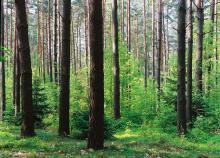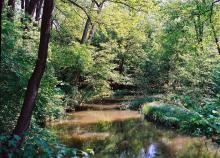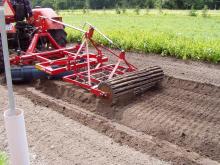 Asset Publisher
Asset Publisher
HUNTING
 fot. Grzegorz Sawko
fot. Grzegorz Sawko
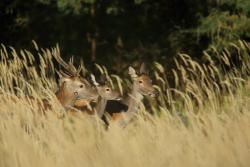 fot. Grzegorz Sawko
fot. Grzegorz Sawko
 Łowiectwo, fot. Archiwum Nadleśnictwa Krosno
Łowiectwo, fot. Archiwum Nadleśnictwa Krosno
Hunting management in the Forest District Krosno is integral component of forest management.
The Forest District develops a hunting policy based on several basic assumptions. These include: the priority of nature, environment and biological diversity protection and targets of permanently balanced forest, agricultural and fishing management. Hunting management using several dozen hunting game species acts in favour of the whole fauna and their natural habitats. On such assumption, the subject of the hunting management is population, rather than individual specimen.
The area of the Forest District is divided into 3 game shooting districts. Two districts are excluded from leasing activities and they constitute Animal Breeding Centre of the State Forests located in the area of the Forest District Krosno, and one district is leased by Military Hunting Association "Głuszec" from Krosno Odrzańskie.
The tasks of the Forest District regarding hunting management include:
• collaboration with the Hunting Association,
• making very precise inventory,
• giving an opinion and approving the annual plans of leased areas of game shooting districts development,
• improving the game living conditions of through: restriction of the anxiety in biotype, protection of the refugium and ensuring the feeding base by providing the accurate number of hunting plots, implementing to forest stands certain tree and shrub species, such as: oaks, beech, willows and wild trees and fruit bushes.
The forest areas of the Forest District Krosno are the place of staying of numerous animal populations – mainly stag, deer and wild boar. The result of this fact are damages, among others, made by hunting game – mainly tapping young trees and chewing trees.
 Asset Publisher
Asset Publisher
Retencja lekarstwem na suszę
Retencja lekarstwem na suszę
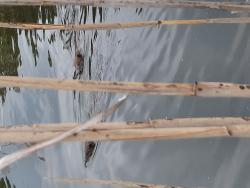 Mała retencja nizinna- Nadleśnictwo Krosno (fot. Arkadiusz Gołuch)
Mała retencja nizinna- Nadleśnictwo Krosno (fot. Arkadiusz Gołuch)
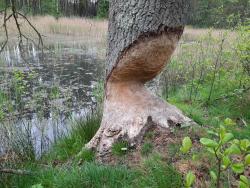 Mała retencja nizinna- Nadleśnictwo Krosno (fot. Arkadiusz Gołuch)
Mała retencja nizinna- Nadleśnictwo Krosno (fot. Arkadiusz Gołuch)
 Mała retencja nizinna- Nadleśnictwo Krosno (fot. Arkadiusz Gołuch)
Mała retencja nizinna- Nadleśnictwo Krosno (fot. Arkadiusz Gołuch)
 Mała retencja nizinna- Nadleśnictwo Krosno (fot. Arkadiusz Gołuch)
Mała retencja nizinna- Nadleśnictwo Krosno (fot. Arkadiusz Gołuch)
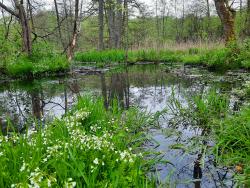 Mała retencja nizinna- Nadleśnictwo Krosno (fot. Arkadiusz Gołuch)
Mała retencja nizinna- Nadleśnictwo Krosno (fot. Arkadiusz Gołuch)

Retencja lekarstwem na suszę
W roku 2013 oraz 2015 na terenie Nadleśnictwa Krosno wybudowanych zostało 30 obiektów mających na celu gromadzenie wody na terenach leśnych. Inwestycja ta realizowana została pod nazwą: „Zwiększanie możliwości retencyjnych oraz przeciwdziałanie powodzi i suszy w ekosystemach leśnych na terenach nizinnych” wpisanego na listę projektów indywidualnych dla Programu Infrastruktura i Środowisko 2007-2013”. W pierwszym etapie inwestycji wybudowanych zostało 20 obiektów, a w drugim po przedłużeniu projektu kolejnych 10.
Wszystkie obiekty mają gromadzić 200 tys m3 wody. Od chwili zakończenia budowy nastąpił gwałtowny i pozytywny proces zmian środowiskowych w obrębie zbiorników retencyjnych. Zaczęły pojawiać się gatunki roślin rzadkich, które wcześniej nie występowały na tym terenie lub zanikły wiele lat temu takie jak wełnianka pochwowata, knieć błotna, czy bagno zwyczajne. Miejsca te przyciągają również gatunki zwierząt, które są nierozerwalnie związane z terenami wodno- błotnymi. Gatunkami takimi są żurawie, kaczki krzyżówki, czy bobry. Te ostatnie czują się nadzwyczaj dobrze w niektórych obiektach i swoją działalnością wyrządzają pewne szkody w drzewostanach sąsiednich. Należy jednak pamiętać, że ich obecność i działalność w znacznym stopniu przyczynia się do poprawy stosunków wodnych na naszych terenach.
Poprzez realizację tego projektu przez Nadleśnictwo Krosno odtworzono dawny sposób użytkowania terenu odbudowując zniszczone obiekty. Ustabilizowało warunki wodne w zasięgu oddziaływania prowadzonej inwestycji. Spowolniono odpływ powierzchniowy wód w zlewni rzeki Biała, Pliszka oraz Odra. Powstały płytkie rozlewiska, które stanowią habitaty rzadkich gatunków roślin i zwierząt. Częściowo odtworzono warunki wodne w starym korycie rzeki Pliszki. Wiele gatunków owadów, płazów, gadów, ptaków oraz ssaków zdobyło nowe miejsca rozwoju i rozrodu. Podniesiono witalność i produktywność siedlisk leśnych w rejonie wykonanej retencji.


